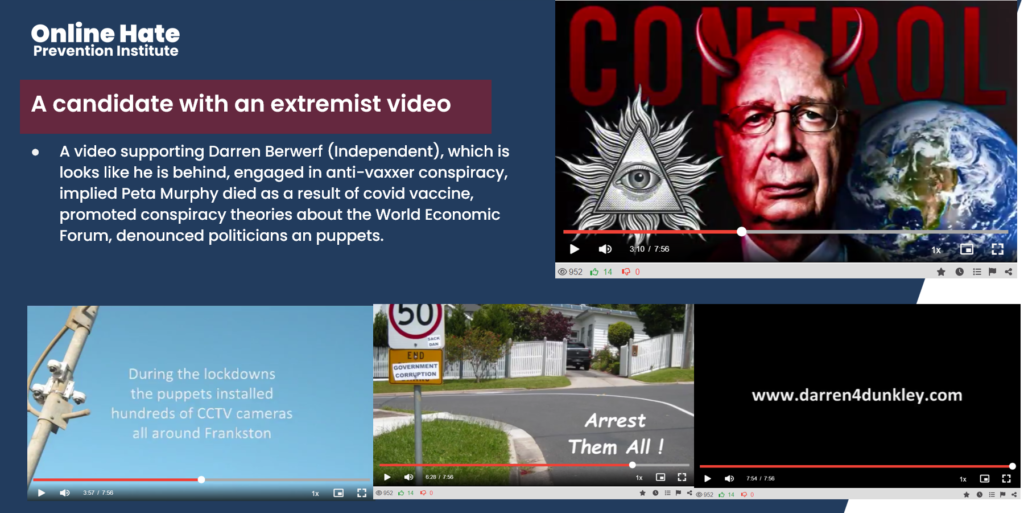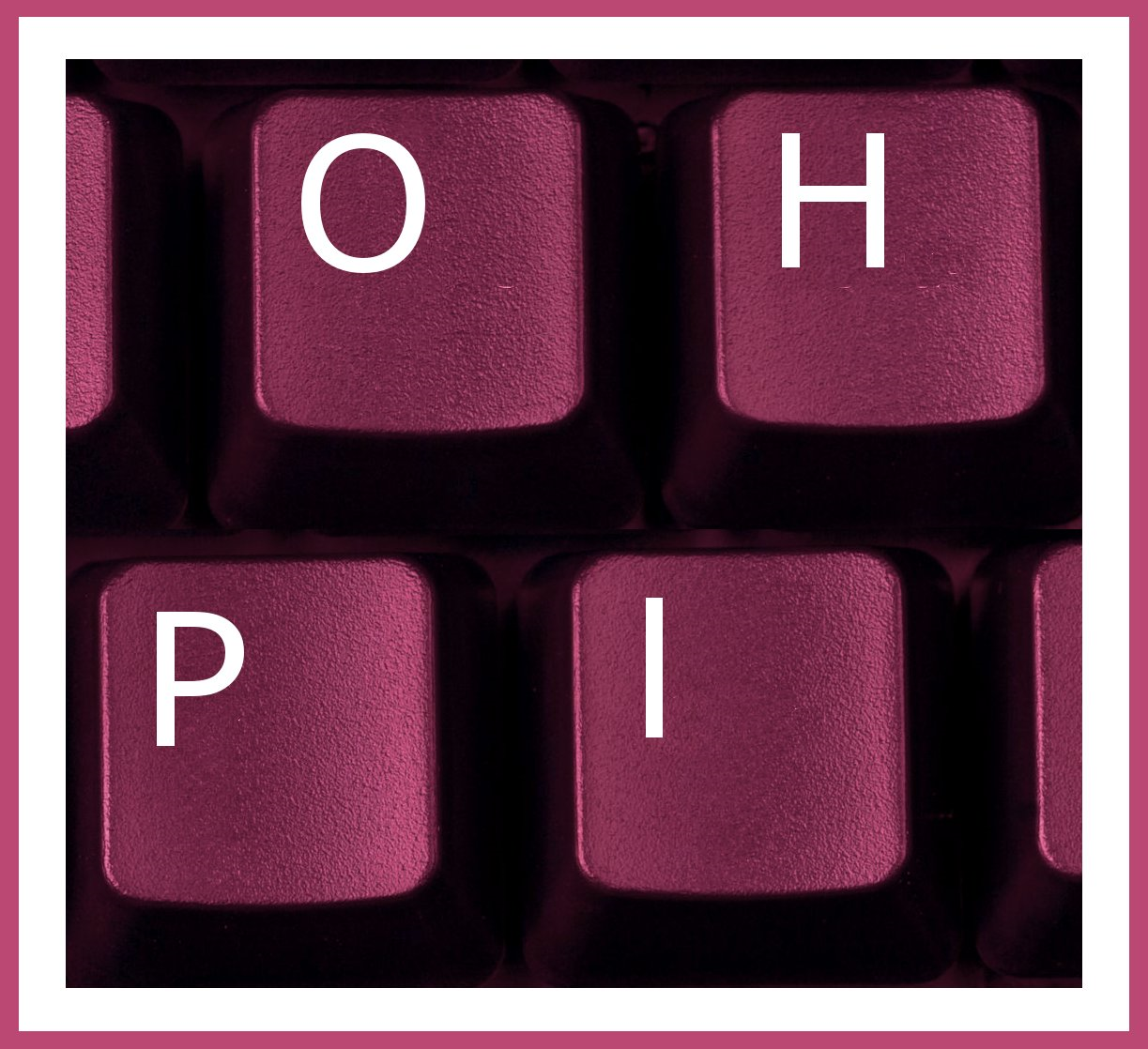Earlier today our CEO, Dr Andre Oboler, met with Kate Thwaites MP, who serves as Chair of Joint Standing Committee on Electoral Matters in the Australian Parliament. We shared our work monitoring racism and disinformation in the referendum on The Voice, a project that collected and assessed over 37,000 social media comments and is run in partnership with the Australian Human Rights Commission and Meta. We also shared our work monitoring social media content during the recent Dunkley by-election. Over three days of the final week of the campaign period we collected over 300 examples of social media content that attacked candidates, was in some way misleading, or that engaged in some form of hate speech.
We highlighted the need for a discussion, among politicians and the public, to provide greater clarity over the line between acceptable political advocacy and content that deliberately misleads the electorate in manner that undermines demcoracy. We highlighted that wherever the line is drawn, it should not allow the creation of a space where racist speech (or other forms of hate speech) that are normally unlawful can become permissible.
Australia is not the United States. Freedom of political communications in this country, the closest we get to the US First Amendment, is there to serve democracy. The fundamental right (and obligation) is for each citizen to cast an informed vote. We need more discussion on what that means in the context of social media content designed to mislead the public, and when such content moves into the realm of disinformation.
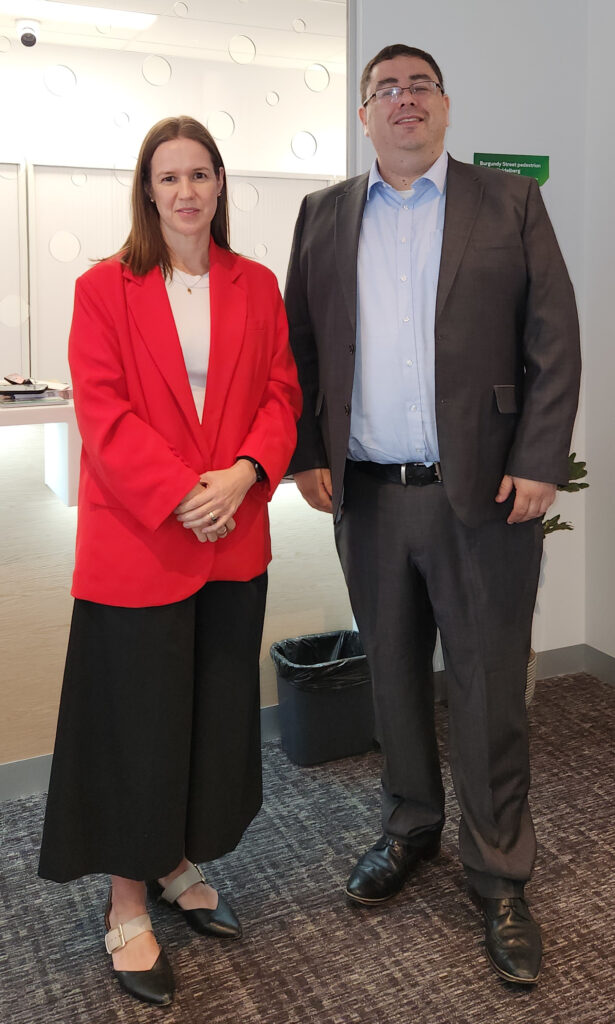
Examples from the Dunkley by-election
We highlighted how “attack content” aimed at Labor’s candidate Jodie Belyea differed between the Liberal Party and Advance Australia. The graphic from the Liberal Party can be considered a fair representation used politically, while the Advance Australia content added words before the quote to make Belyea’s comment seem more directed at individual voters (personally) rather than a comment on the overall result and society at large. While subtle, the distinction between the content of the Liberal Party and that of Advance Australia is notable. The question is should such content be seen to cross a line.
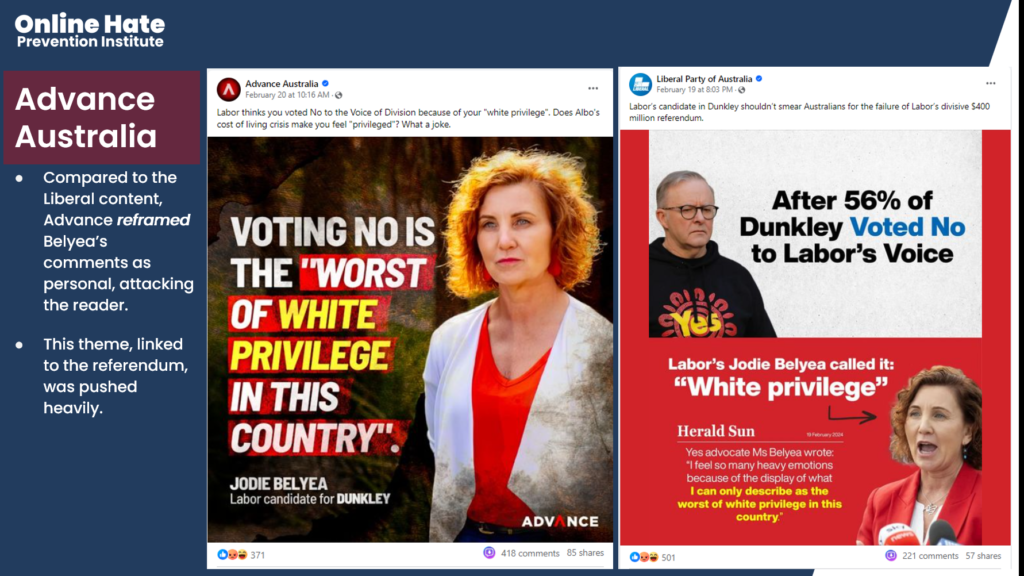
Another example involved a parody account of The Greens. The account posted content that not only attacked the Greens, but was also designed to stir up Islamophobia. Neither political speech nor parody makes such hate speech acceptable. Worryingly, the content also included what looks like an entirely real election authorisation notice on behalf of The Greens, perhaps copied from real election material. The raises additional questions about misrepresentation in the context of elections. The same page attacked two Greens politicians who had engaged in antisemitic speech, but did so in a way that shared even more extreme antisemitic speech and attributed it to them.
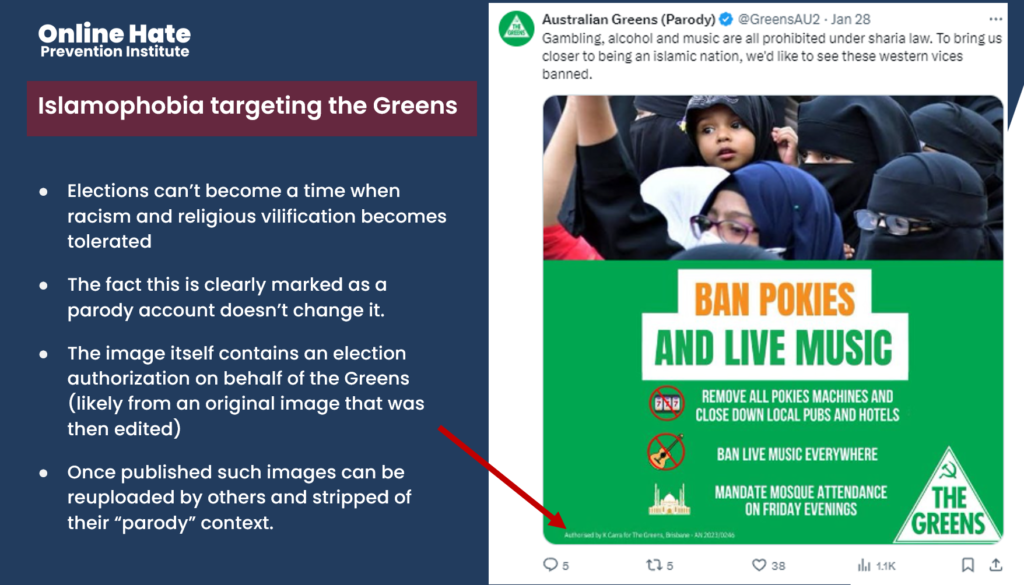
We also noted a video that appears to be from one of the candidates, or at the every least promotes their campaign, which engaged in anti-Vaxxer conspiracy theories, World Economic Forum conspiracy theories, calls to lock up politicians, and more.
